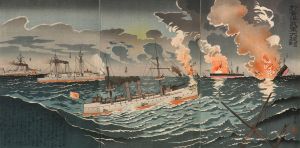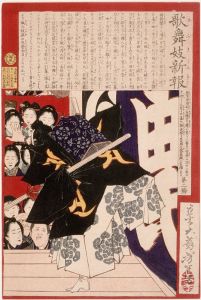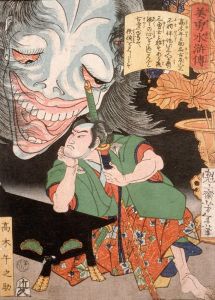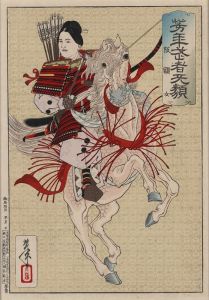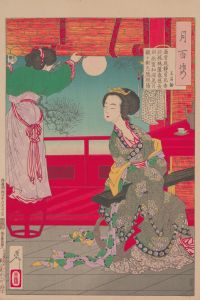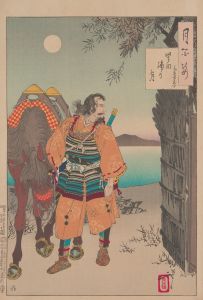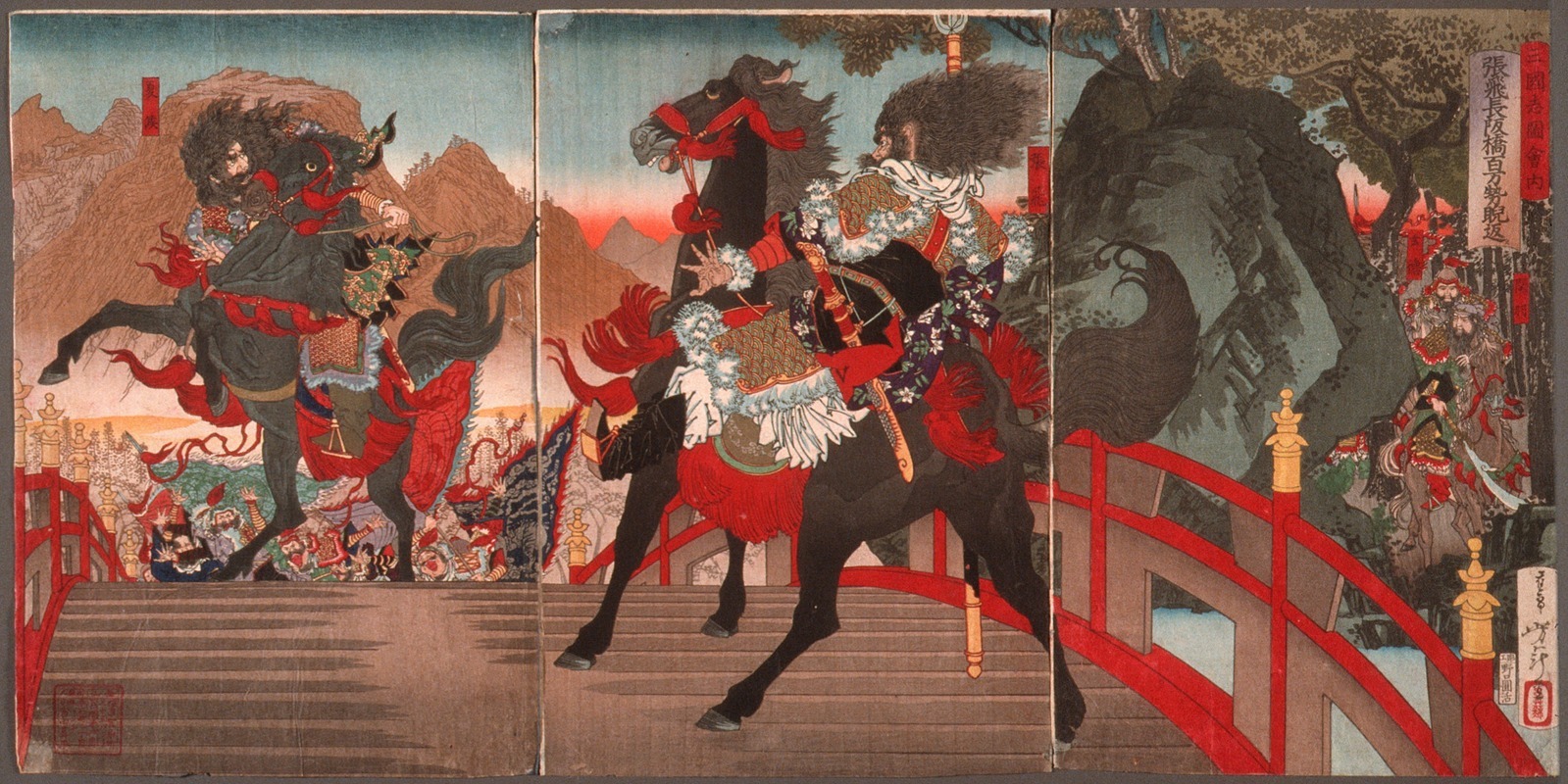
Zhang Fei on the Long Sloped Bridge Turning Away One Million Wei Troops with a Powerful Stare
A hand-painted replica of Tsukioka Yoshitoshi’s masterpiece Zhang Fei on the Long Sloped Bridge Turning Away One Million Wei Troops with a Powerful Stare, meticulously crafted by professional artists to capture the true essence of the original. Each piece is created with museum-quality canvas and rare mineral pigments, carefully painted by experienced artists with delicate brushstrokes and rich, layered colors to perfectly recreate the texture of the original artwork. Unlike machine-printed reproductions, this hand-painted version brings the painting to life, infused with the artist’s emotions and skill in every stroke. Whether for personal collection or home decoration, it instantly elevates the artistic atmosphere of any space.
"Zhang Fei on the Long Sloped Bridge Turning Away One Million Wei Troops with a Powerful Stare" is a woodblock print by the renowned Japanese artist Tsukioka Yoshitoshi. This artwork is part of Yoshitoshi's series "One Hundred Aspects of the Moon," which was created between 1885 and 1892. The series is celebrated for its imaginative and dramatic depictions of historical and mythical subjects, often drawing from Chinese and Japanese literature and folklore.
The print portrays a legendary episode from the historical novel "Romance of the Three Kingdoms," a classic of Chinese literature attributed to Luo Guanzhong. The story is set during the tumultuous Three Kingdoms period (220–280 AD) in China, which followed the fall of the Han Dynasty. This era was marked by the division of China into three rival states: Wei, Shu, and Wu.
Zhang Fei, a prominent general of the Shu state, is one of the central figures in this narrative. He is known for his bravery, strength, and fierce loyalty to Liu Bei, the founder of Shu. The scene depicted in Yoshitoshi's print is one of the most famous episodes involving Zhang Fei. According to the tale, Zhang Fei single-handedly held off the advancing troops of the Wei state at Changban Bridge. With a powerful and intimidating stare, he is said to have frightened the Wei soldiers into retreat, despite being vastly outnumbered.
Yoshitoshi's depiction captures the dramatic tension and heroic stature of Zhang Fei in this legendary moment. The artist's style is characterized by bold lines and dynamic composition, which effectively convey the intensity of the scene. The use of moonlight in the series adds a mystical and atmospheric quality to the print, enhancing the legendary nature of the story.
Tsukioka Yoshitoshi (1839–1892) was a prominent figure in the ukiyo-e tradition, a genre of Japanese woodblock prints that flourished from the 17th to the 19th centuries. Yoshitoshi is often regarded as the last great master of this art form. His work is noted for its innovative use of color, dramatic imagery, and psychological depth. "One Hundred Aspects of the Moon" is considered one of his masterpieces, showcasing his ability to blend traditional techniques with modern sensibilities.
The print of Zhang Fei is a testament to Yoshitoshi's skill in capturing the essence of legendary figures and their stories. It reflects both the historical significance of the Three Kingdoms period and the enduring appeal of its tales. Through his art, Yoshitoshi not only preserved these stories but also introduced them to a wider audience, bridging cultural and temporal divides.
In summary, "Zhang Fei on the Long Sloped Bridge Turning Away One Million Wei Troops with a Powerful Stare" is a striking example of Tsukioka Yoshitoshi's work, illustrating a legendary moment from Chinese history with artistic flair and historical insight. The print remains a valuable piece for both its artistic merit and its cultural significance, embodying the enduring legacy of the Three Kingdoms narrative.





